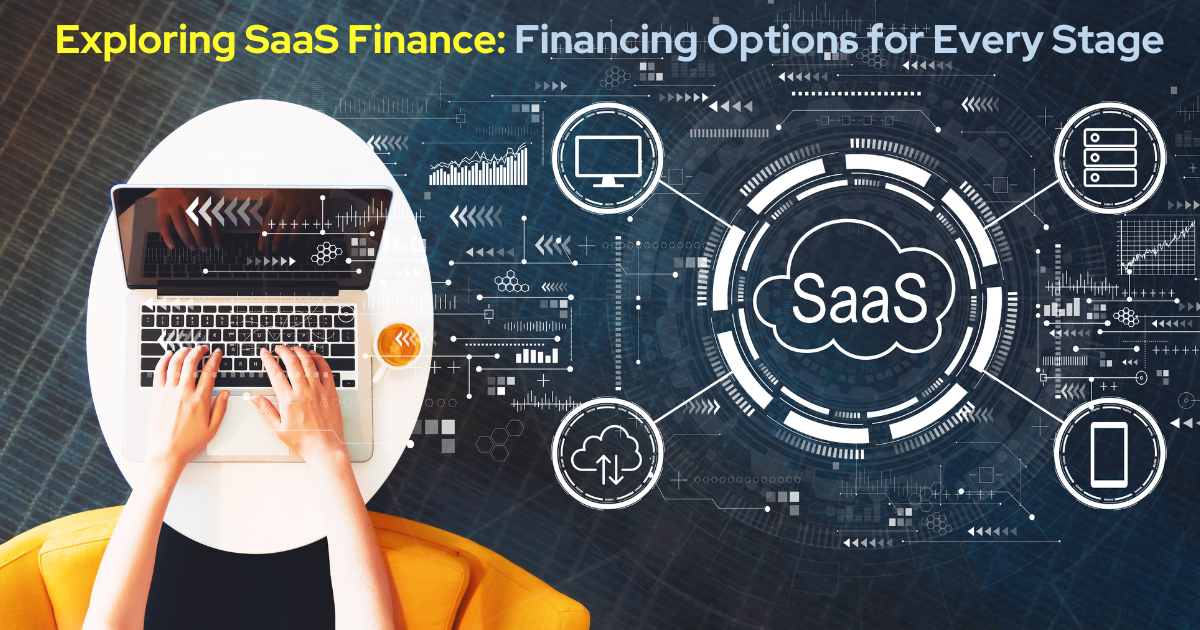Exploring SaaS Finance: Financing Options for Every Stage

Introduction: What is SaaS Finance?
Welcome to our blog post! In this article, we dive into the world of SaaS finance and explore the various financing options available for businesses at every stage of growth. Whether you’re a SaaS startup looking to secure funding, a scaling SaaS company in need of strategic financing, or an established SaaS business aiming to sustain and expand your success, understanding SaaS finance is crucial for your journey. So, let’s uncover what SaaS finance is all about and how it can help fuel your business growth.
Understanding the Importance of Financing in SaaS
Financing plays a pivotal role in the success of any business, and SaaS companies are no exception. The software-as-a-service (SaaS) model offers immense potential for growth, but it also requires significant capital investments. From developing the product, establishing a customer base, to expanding operations, SaaS companies need financial resources to navigate their growth journey.
However, securing financing as a SaaS company comes with its own set of challenges. Traditional lenders and investors often struggle to understand the unique dynamics of the SaaS industry, making it essential for SaaS entrepreneurs to explore specialized financing options tailored to their needs.
Financing Options for SaaS Startups
3.1 Bootstrapping: Funding from Within
Bootstrapping is a common approach for SaaS startups in the early stages. It involves self-funding the business using personal savings, credit cards, or revenue generated from initial customers. Bootstrapping offers founders more control as they don’t have to dilute their ownership or answer to external investors. However, it also requires careful financial management and may limit the speed of growth in the initial phase.
3.2 Seed Funding: Venture Capital and Angel Investors
Seed funding is an attractive option for SaaS startups seeking external investments. It typically involves raising capital from venture capital firms or angel investors who are interested in supporting early-stage companies. This type of funding allows startups to access expertise, networks, and mentorship, in addition to financial resources. However, founders must be prepared to give up equity in their company and navigate the complex world of investor relations.
3.3 Crowdfunding: Engaging the Power of the Masses
Crowdfunding has emerged as a popular financing option for SaaS startups in recent years. Platforms like Kickstarter and Indiegogo enable entrepreneurs to pitch their ideas to a large audience and secure funding from individual backers. Crowdfunding not only provides capital but also serves as a marketing tool, helping businesses validate their ideas and generate early adopters. Nonetheless, running a successful crowdfunding campaign requires strategic planning, compelling storytelling, and effective marketing efforts.
Financing Strategies for Scaling SaaS Companies
As SaaS companies move beyond the startup phase and enter the scale-up stage, their financing needs evolve accordingly. Let’s explore some of the financing strategies commonly adopted by scaling SaaS companies.
4.1 Series A, B, and C Funding: Attracting Institutional Investors
For scaling SaaS companies, securing series A, B, or C funding can be a game-changer. These funding rounds involve raising capital from institutional investors in exchange for equity. Venture capital firms and private equity investors look for promising businesses with proven traction, solid revenue generation, and a scalable business model. However, these funding rounds can be highly competitive, requiring thorough preparation, polished pitches, and effective negotiation skills.
4.2 Debt Financing: Loans and Lines of Credit
Debt financing is a strategy many scaling SaaS companies leverage to fuel their growth. It involves obtaining loans or lines of credit from banks or alternative lenders. Debt financing offers liquidity without the dilution of equity, allowing founders to retain ownership and control. However, it also comes with the responsibility of repaying the borrowed funds and the associated interest rates, so careful financial planning is essential.
4.3 Strategic Partnerships: Collaborating for Expansion
Forming strategic partnerships is another avenue for financing and scaling SaaS companies. By collaborating with larger organizations, SaaS companies can gain access to additional resources, distribution channels, and customer bases. Strategic partnerships can take many forms, including joint ventures, licensing agreements, or co-marketing initiatives. However, finding the right partners and negotiating mutually beneficial terms requires thorough research and a strategic approach.
Sustaining Success: Financing for Established SaaS Companies
Even after reaching a level of stability and success, established SaaS companies often seek financing opportunities to sustain their growth momentum and explore new avenues. Let’s delve into some common financing options for these companies.
5.1 IPO: Going Public for Growth
Going public through an initial public offering (IPO) is a significant milestone for established SaaS companies. It involves listing the company’s shares on a stock exchange, allowing interested investors to buy and trade them. IPOs provide a substantial influx of capital, increased visibility, and potential acquisitions. However, going public also brings greater public scrutiny, regulatory requirements, and the need for ongoing financial reporting and transparency.
5.2 Acquisitions: Growing through Mergers
Acquiring other companies can be an effective strategy for established SaaS companies looking to expand their product offerings, enter new markets, or eliminate competitors. Acquisitions provide access to new technologies, talent, and customer bases, enabling accelerated growth. However, the process of identifying suitable acquisition targets, negotiating deals, and integrating acquired companies is complex and requires careful planning and execution.
5.3 Revenue-Based Financing: Unleashing Profit for Expansion
Revenue-based financing is an alternative option for established SaaS companies aiming to fuel their growth without giving up equity or taking on additional debt. This financing model involves raising capital from investors in exchange for a percentage of future revenue. Revenue-based financing allows companies to tap into their existing revenue streams to fund expansion plans. However, it is crucial to carefully evaluate the terms and implications, ensuring the arrangement aligns with the company’s long-term goals.
Conclusion: Navigating the SaaS Financing Landscape
In conclusion, SaaS finance plays a pivotal role in the success and growth of SaaS companies at every stage. Whether you’re a startup, scaling company, or established player, understanding and exploring the right financing options can help you unleash the true potential of your business. From bootstrapping and seed funding to strategic partnerships, IPOs, and revenue-based financing, the SaaS financing landscape offers a wide array of choices. However, it’s essential to carefully evaluate each option, aligning it with your business goals, growth trajectory, and funding requirements. So, take the time to analyze your unique situation, assess the available financing options, and make informed decisions that will propel your SaaS business forward.
Remember, when it comes to SaaS finance, knowledge is power. Stay informed, stay proactive, and continuously navigate the ever-evolving landscape to pave your path to success.
